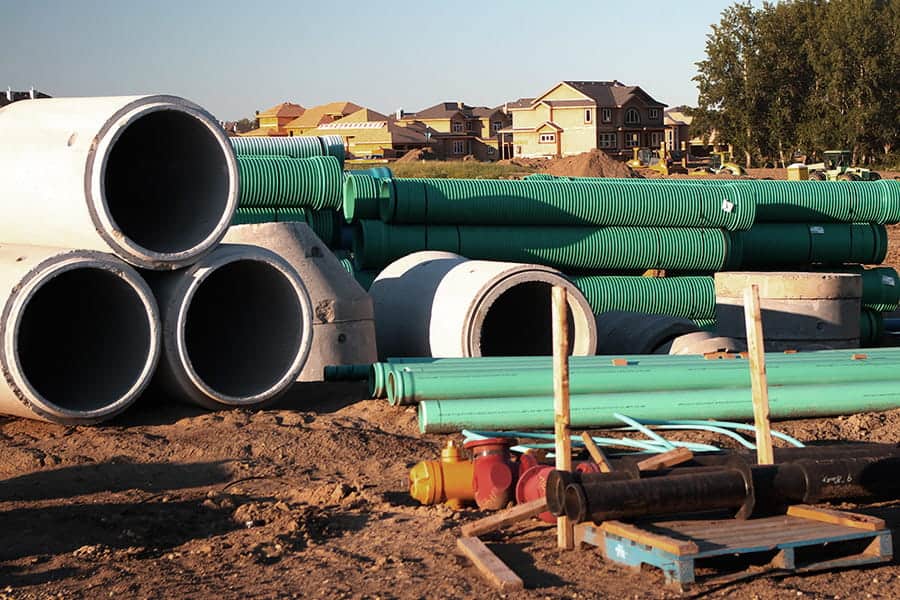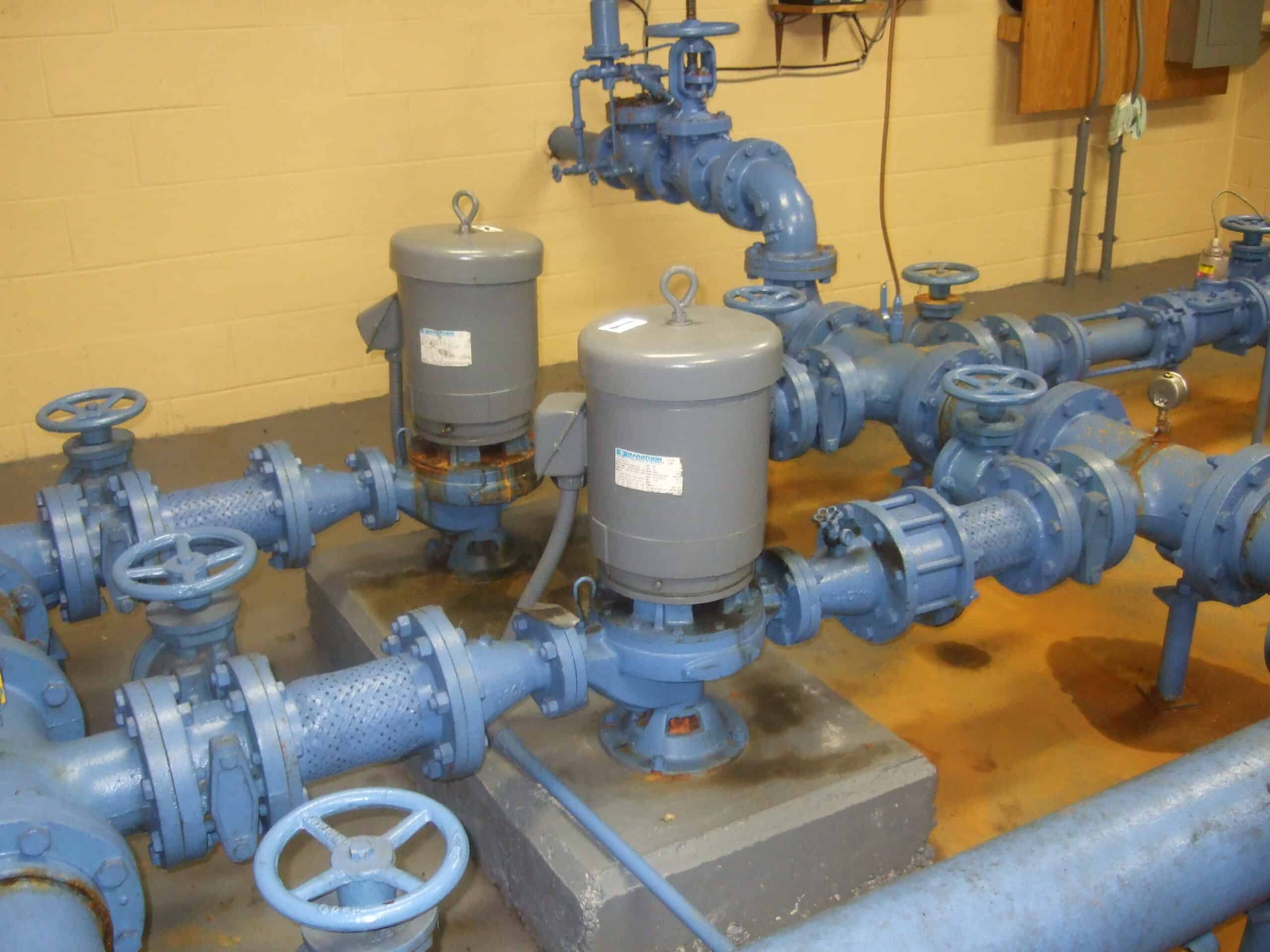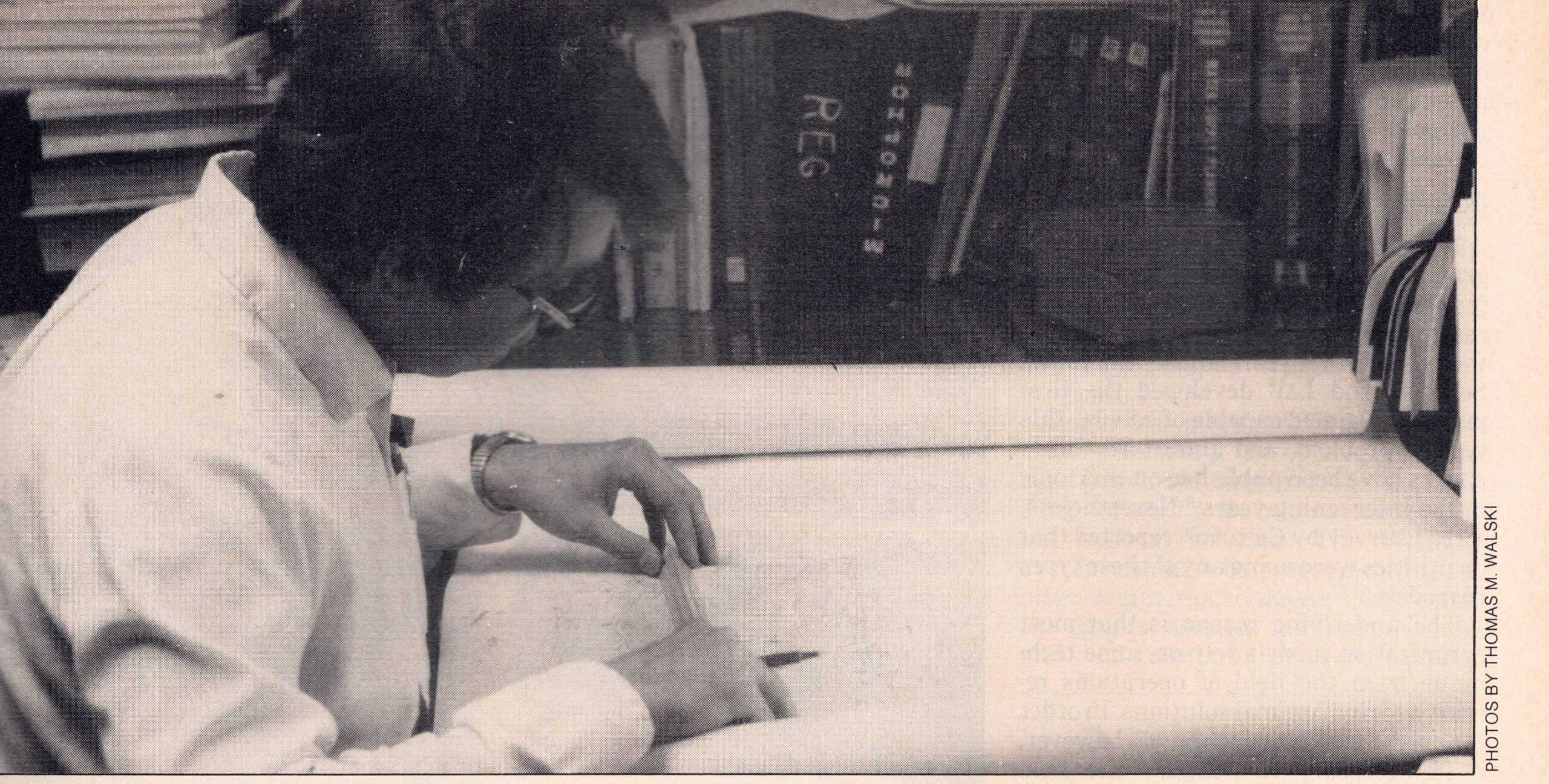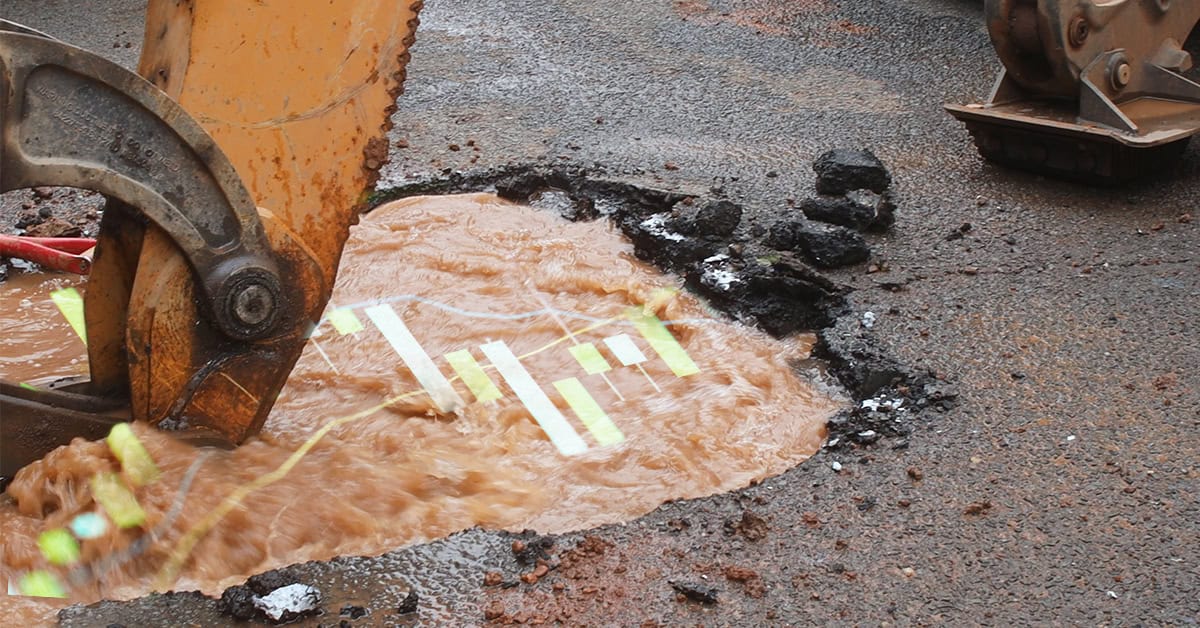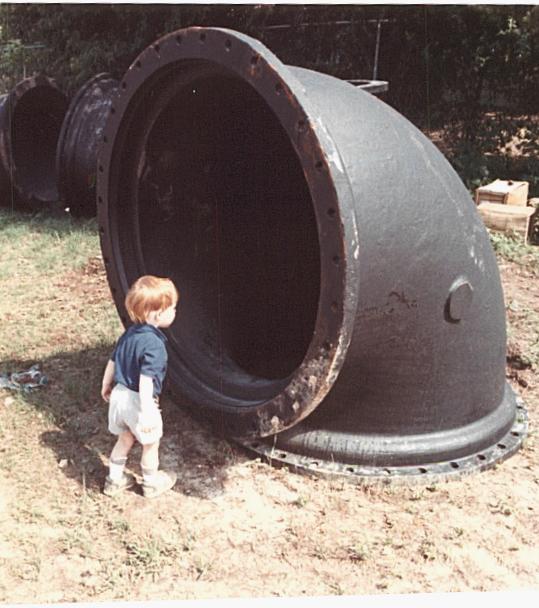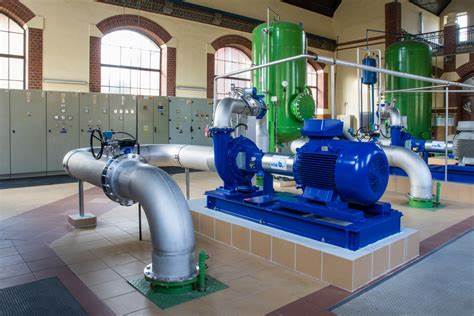Years ago, I came home from work one day, turned on the water faucet, and nothing came out. Usually, this would be an indication that there was some water system maintenance work being done in our neighborhood, but I didn’t notice anything unusual on the drive home.
At times like this, I turned to my neighbor Leroy. He was retired and knew everything that was going on in town. He told me there was a pipe break on the opposite side of town. But how could that affect us?
I drove across town and came upon the scene.
There had been a pipe break, and nobody knew where the valve was to shut it down.
This drained the tanks and put everyone out of water. How could this happen?
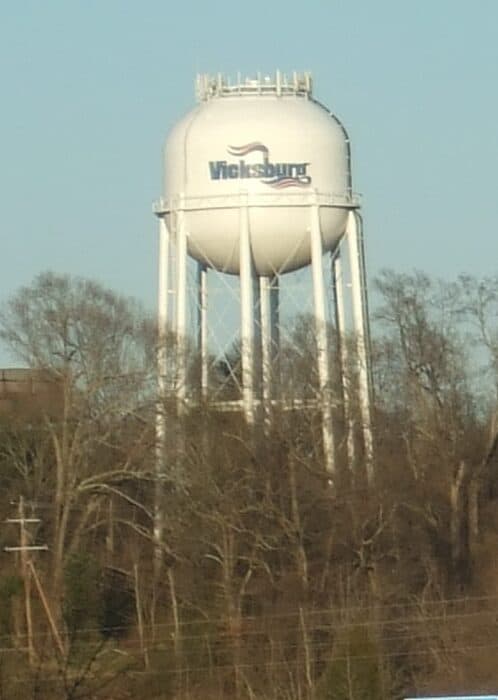
It turns out that the distribution superintendent had retired a few years back, and that day he had gone fishing. (This was long before cell phones became ubiquitous.) He eventually wandered back into town, walked over to a grassy patch on the side of the road, moved some of the grass with his foot, and said, “Here’s the valve”. They eventually got the system back online, and some lessons were learned.
This was a large pipe that, at one time, had served as a main line from a now abandoned treatment plant. It looked as if it was a transient induced break. This was an early lesson in my career about the importance of isolation valves. Failure to close a valve caused an entire system to be shut down. I’ve learned the three most important items for a resilient water distribution system are valves, valves, and valves.
Isolation valves are probably the most neglected items in water system. It led me to work on better methods to identify the relationship between valves, and system reliability. Since then, I’ve written numerous papers and given many presentations about the importance of valving. I‘ve become a de facto godfather of valves. That’s also why Bentley’s OpenFlows software leads the way in reliability analysis.
What could Bentley’s OpenFlows software could have done to help this situation?

First, there is HAMMER, and a transient analysis with HAMMER could have been able to point out where a failure was likely and what could be done to minimize the impact of transients.
More importantly, the tools in WaterGEMS and WaterSight that can be used to identify distribution segments that can be isolated and what valves it would take to accomplish this could have helped with the shutdown, both in terms of system design and emergency response. With a few mouse clicks, an engineer can determine where some additional valving could make the system more reliable. Operators would know where to look for backup valves.
Here are a few of the papers, books and presentations I’ve done on the subject. (Do you think I’m obsessed with isolation valves?):
- Male, J. and Walski, T., Troubleshooting Water Distribution System Problems, Lewis Publishers, 1990.
- Walski, T. “A Valve in Time Saves Nine,” Civil Engineering Seminar, University of Kentucky, December 1992
- Walski, T., “Water Distribution Valve Topology,” Reliability Engineering and System Safety, Vol. 42, No. 1, 21, 1993.
- Walski, T. “Practical Aspects of Providing Reliability in Water Distribution Systems,” Reliability Engineering and System Safety, Vol. 42, No. 1, p. 13, 1993.
- Walski, T. “Valves and Water Distribution System Reliability,” AWWA National Convention, New York, NY, June 1994.
- Goulter, I., Walski, T., Mays, L., Sakarya, B., Buchart, F. and Tung, Y., “Reliability Analysis for Design,” in L. Mays, Water Distribution System Handbook, McGraw-Hill, New York, 2000.
- Walski, T. “Issues in Providing Reliability in Water Distribution Systems,” ASCE EWRI Conference, Roanoke, VA, May 2002.
- Walski, T., Weiler, J. and Culver, T. “Using Criticality Analysis to Identify the Impact of Valve Location,” Water Distribution System Analysis Symposium, Cincinnati, Oh.
- Walski, T. “Finding Closed Valves in your Water Distribution System,” AWWA-DSS, Reno, Nev. Sept. 2009.
- Walski, T. “How Many Isolation Valves are Needed in a Water Distribution System?” CCWI Conference, Exeter, UK, Sept 2011.
- Liu, H., Walski, T., Fu, G. and Zheng, C. “Failure Impact Analysis of Isolation Valves in a Water Distribution Network,” Journal of Water Resources Planning and Management, Vol. 143, No. 7, July 2017.
- Meng, F., Walski, T., Fu, G. and Butler, D. “The Cost of Being More Resilient—A Case Study of Valve Maintenance in Water Distribution Systems,” EWRI Conference, Pittsburgh, Pa.
- Walski, T., Liu, H., Fu, G., Zhang C. “Which Isolation Valves are Most Important,” EWRI Conference, Pittsburgh, Pa.
- Walski, T. “Providing Reliability in Water Distribution Systems,” Journal of Water Resources Planning and Management, Vol. 146, No. 2, February 2020, //doi.org/10.1061/(ASCE)WR.1943-5452.0001168.
- Abdel-Mottaleb, N. and Walski, T. “Identifying Vulnerable and Critical Water Distribution Segments,” EWRI Conference, Las Vegas, May 2020.
To learn more, check out some of the Bentley Communities Wiki’s on this topic.
- https://communities.bentley.com/products/hydraulics___hydrology/w/hydraulics_and_hydrology__wiki/4615/running-a-criticality-analysis
- https://communities.bentley.com/products/hydraulics___hydrology/w/hydraulics_and_hydrology__wiki/22518/how-does-the-find-segments-by-element-feature-work-in-a-criticality-analysis
- https://communities.bentley.com/products/hydraulics___hydrology/w/hydraulics_and_hydrology__wiki/45087/critical-valves-analysis
- https://communities.bentley.com/products/hydraulics___hydrology/w/hydraulics_and_hydrology__wiki/29862/color-code-pipes-to-show-the-criticality-system-demand-shortfall-percentage-using-the-pipe-renewal-planner-tool
If you like blogs like this, you can go back to our library of blogs at https://blog.bentley.com/category/hydraulics-and-hydrology/.
Want to learn more from our resident water and wastewater expert? Join the Dr. Tom Walski Newsletter today!

